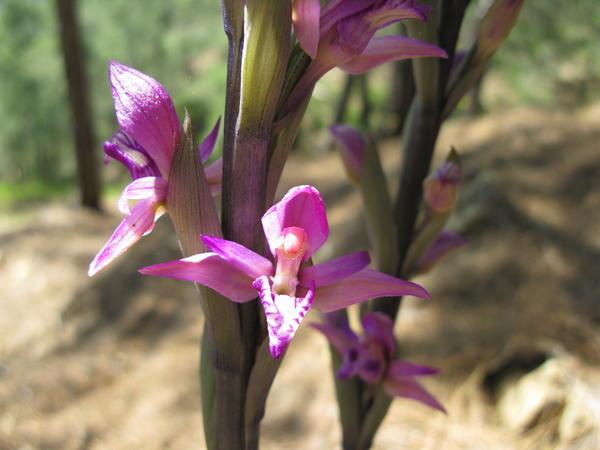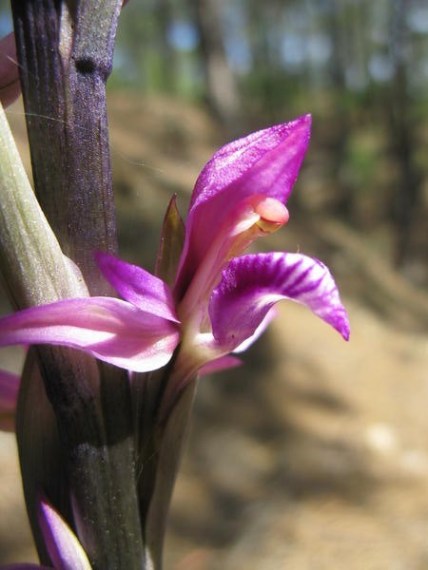 Last week I was rambling on about wandering over the mountains and getting overly excited about a huge stick of ‘asparagus‘ that I’d discovered. In my sweaty, fevered state I’d convinced myself that it must be the biggest tongue orchid anyone had ever seen and vowed to return this week to check it out once it had flowered.
Last week I was rambling on about wandering over the mountains and getting overly excited about a huge stick of ‘asparagus‘ that I’d discovered. In my sweaty, fevered state I’d convinced myself that it must be the biggest tongue orchid anyone had ever seen and vowed to return this week to check it out once it had flowered.
Two things came to mind this morning; well, three actually: 1 – I should check my reference stuff more thoroughly; 2 – I should keep my mouth shut until I know what I’m talking about (a point J makes often); 3 – J can be a hard taskmaster in an ‘Onwards and Upwards’ sort of way.
We’d determined to revisit the site on the very steep mountainside by approaching from a different direction. We knew there were no tracks and that footing would be precarious in places – the best we could hope for was a lot of sweat and a goat track to guide us. It proved to be a heart-pounding climb – even J suggested a couple of rests.
On the way we were looking out for other interesting stuff and here are a few photos to break the monotony!



Arriving at the site of the ‘asparagus’ I knew right away that keeping ‘schtum’ and checking references (engaging brain before opening mouth) is a good mantra for there were indeed a few that were open including the one in the photo below.

What we have here ladies and gentlemen is Limodorum arbortivum – the Violet Limodore or the Violet Bird’s Nest Orchid (for some obscure reason). This orchid is interesting in that it has no leaves, lives off decaying matter and is totally dependant upon, but not parasitic of, fungi of the Russulaceae family. It produces the largest seeds of any of the European orchids and the seedlings are very slow to develop staying below ground for 8-10 years before flowering! It is also fairly common and very widespread.
So, an interesting but disappointing find, especially considering the physical effort needed to get to it? Not at all, because there is a twist in the tail (or tale) – as you can clearly see from the photo it is anything but ‘violet’. We have violet near the house and in other places around the area – these specimens are pink. That means that what we have here is a variation or sub-species named Limodorum arbotivum var. rubrum which was only confirmed in 1997 and is spread very thinly on the ground only recorded at 20 other sites in Turkey.

Now ask me if it was worth the blood, sweat and creaking joints . .
Alan in Okçular
Yes, well worth it…and deserves a few glasses of home made raki…
LikeLiked by 1 person
you are a lady after my own heart! 😀
LikeLiked by 1 person
The cup that cheers and, with a bit of luck, inebriates…
LikeLiked by 1 person
😀 cheers!
LikeLike
I’d certainly say so! But of course, they’re not my bones. Thanks for the effort.
LikeLiked by 1 person
😀 sometimes I think a rosary might be better than a rose, or rosy cheeks for that matter! Nah! Forget the rosary!
LikeLike
Great photo’s.
LikeLiked by 1 person
🙂
LikeLike